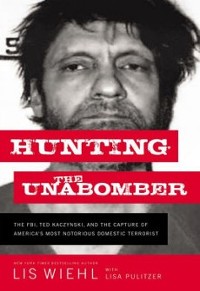 
Thomas Nelson; Illustrated
Edition
April 28th, 2020
Biography / Terrorism
9780718092122
|
Review
& Interview by Elise Cooper
Hunting
the Unabomber
by Lis Wiehl with Lisa Pulitzer is the second in
a series of books. The author goes on the “hunt”
to find killers whose cases had social significance.
Although the book covers the facts, timelines and
people involved, it also adds a new perspective
on how the FBI organized their efforts to track
him down.
The book shows how Ted Kaczynski, better known as
the Unabomber, masterminded a campaign of terror,
maiming, and killings of innocent people through
bombs sent in untraceable packages. After a “manifesto,”
was published in 1995 written by the Unabomber,
the case was finally solved.
Written as a thriller this book is well researched,
interesting, and engrossing. Readers will learn
more about the Unabomber and how he was hunted.
Elise
Cooper: How did your previous job experience influence
you?
Lis Wiehl: I was honored
to spend five years as a federal prosecutor. I prosecuted
murder, rape, assault, human trafficking, and other
violent offenses. I loved that the goal of the job
was justice for all, pure and simple. As a writer
I approached it as I did when a prosecutor. There
was sweat and a lot of hard work behind the scenes
where I had to marshal the facts and decide what
to use. The best trial lawyers are storytellers.
Elise:
What did you take away from your research?
Lis:
Many things. He had put the country in a state of
mass hysteria where people were afraid to open any
package they received in the mail. It was the largest
hunt the FBI has ever taken with over 150 people
involved.
Elise:
Who is Patrick Webb?
Lis:
He was the FBI agent in charge of the Unabomber
task force. He was willing to help me because my
dad was an FBI agent and he wanted to set the record
straight. The miniseries that was on TV was not
accurate, and highlighted a profiler, James R. Fitzgerald
who was not involved the way the show made it out
to be. Webb said that the miniseries had gotten
it wrong, and that the hunt was a team effort. He
said that the agent portrayed on the show, while
on the team, had never met Kaczynski. Agent Webb
said that the miniseries painted a false narrative
of how the FBI really handled the case. He worried
that if people believed that the TV series was the
true story about the Unabomber, they would have
been misled.
Elise: How would you describe Ted Kaczynski?
Lis:
He had gone to Harvard at the age of sixteen because
he was off the grid smart. He always wanted to be
the smartest person in the room and needed his ego
to be gratified. His parents pushed him, and he
became emotionally disturbed. He could not develop
relationships, especially with women. Eventually,
he isolated himself.
Elise:
Just looking at what he wrote do you think he had
a point?
Lis:
It is very hard to take the violence out of it.
With that said there were people who did believe
technology was getting out of hand including some
FBI agents. Remember in 1996 there was no social
media. Tech does allow platforms of the dark web
with vile people, and there is Internet bullying.
I cannot believe how people used to go to a restaurant
before the pandemic and would sit with one another,
but all were on their phones. This is crazy and
has gotten out of hand. On the other hand, with
the pandemic people are able to be kept together.
Elise:
Why do you think it took so long to capture him?
Lis:
There was a six-year gap, where the violence stopped,
and the consideration that the task force was going
to be dissembled. Patrick Webb and a few others
convinced the powers that be to give them another
six months. I think it took so long because Ted
Kaczynski perfected bomb making. He used discarded
pieces of wood, wire, and metal that he picked up
along the edge of the road, in junkyards, dumpsters,
and other places near his cabin. He never bought
new materials to fashion his bomb components. There
was never anything that investigators could trace
back to a lumber yard, hardware store, or plumbing
supply shop because he never frequented those establishments
and never bought any of his bomb-making goods. To
further compound problems for investigators, Kaczynski
had been careful to remove any serial numbers or
other identifying marks from the components he used.
Plus, there was nothing about him that suggested
he was, or could be, dangerous to others.
Elise:
Can you give a shout out about your next book?
Lis:
Ah, you know I can’t tell you the target of
my next “hunt”! I don’t want to
ruin the surprise. But I can tell you it’s
a bad guy who is both intrinsically interesting
and culturally relevant today. I’m bringing
my law enforcement background to the ‘hunt’,
aiming to give readers fresh insight, information,
and new angles on a subject that may even continue
to threaten our national security.
|
